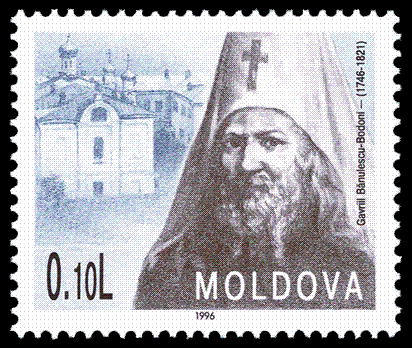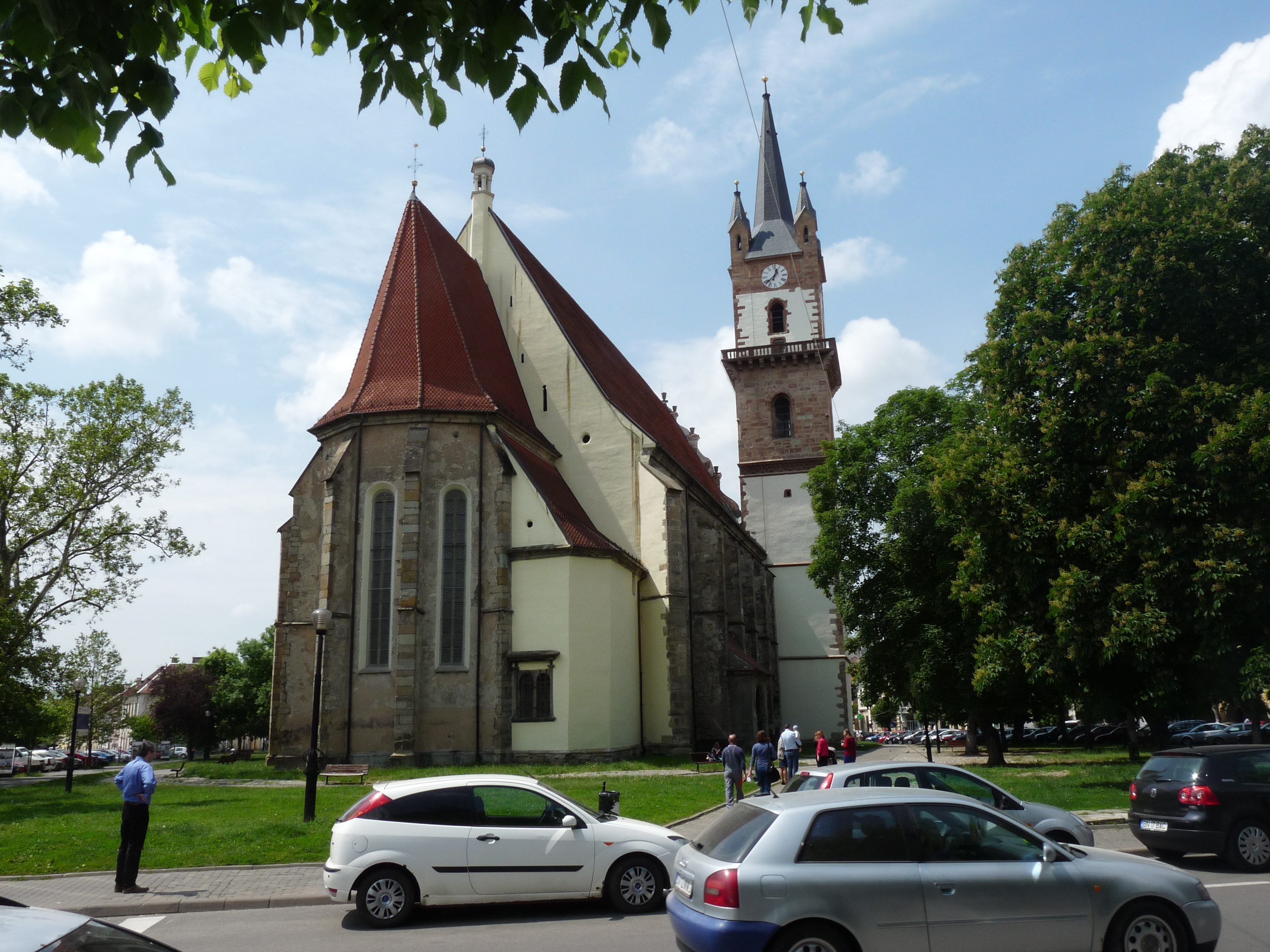|
Gavril Bănulescu-Bodoni
Gavril Bănulescu-Bodoni (; 1746 – 30 March 1821) was a Romanian clergyman who served as Metropolitan of Moldavia (1792), Metropolitan of Kherson and Crimea (1793–1799), Metropolitan of Kiev and Halych (1799–1803), Exarch of Moldo-Wallachia (1806–1812), and Archbishop of Chişinău (1812–1821), being the first head of the church in Bessarabia after the Russian annexation. Biography Early life Born in Bistrița, Transylvania to a family originating from Câmpulung, Moldavia, Bănulescu studied at the Kiev Theological Academy (1771–1773), then at the Greek-language academy in the Island of Patmos, Smyrna and the Athonite Academy in Vatopedi (1773–1786).Batalden, p. 470Păcurariu At Patmos, he befriended Nikephoros Theotokis, a Greek cleric and enlightenment figure, with whom he taught at the Princely Academy of Iaşi in 1776. In 1779 he became a monk in Constantinople, then continued his studies in Patmos, returning to Moldavia ... [...More Info...] [...Related Items...] OR: [Wikipedia] [Google] [Baidu] |
Bistrița
(; german: link=no, Bistritz, archaic , Transylvanian Saxon: , hu, Beszterce) is the capital city of Bistrița-Năsăud County, in northern Transylvania, Romania. It is situated on the Bistrița River. The city has a population of approximately 70,000 inhabitants and administers six villages: (; ), (; ), (; ), (; ), (until 1950 ; ; ) and (; ). Etymology The town was named after the River, whose name comes from the Slavic word meaning 'fast-moving water'. History The earliest sign of settlement in the area of is in Neolithic remains. The Turkic Pechenegs settled the area in 12th century following attacks of the Cumans. Transylvanian Saxons settled the area in 1206 and called the region . A large part of settlers were fugitives, convicts, and poor people looking for lands and opportunities. The destruction of ("Market Nösen") under the Mongols of central Europe is described in a document from 1241. The city was then called . Situated on several trade routes, bec ... [...More Info...] [...Related Items...] OR: [Wikipedia] [Google] [Baidu] |
National University Of Kyiv-Mohyla Academy
National University of Kyiv-Mohyla Academy ( NaUKMA) ( uk, Національний університет «Києво-Могилянська академія» (НаУКМА)) is a national, research university located in Kyiv, Ukraine. The Kyiv-Mohyla Academy, the school's predecessor, was established in 1615. The NaUKMA is located on the Academy's grounds in the ancient Podil neighborhood. In 1991, it was re-organized, and teaching began the following year. NaUKMA has the highest level of accreditation as outlined by the Ministry of Education and Science of Ukraine, and is one of the thirteen educational institutions in Ukraine having a status of a research and autonomous university. NaUKMA takes part in numerous international university collaborations, such as the European University Association. The university is bilingual in Ukrainian and English. It is one of Ukraine's few universities with internationally recognized diplomas. With around 4000 students, NaUKMA is one ... [...More Info...] [...Related Items...] OR: [Wikipedia] [Google] [Baidu] |
Gavriil Callimachi
Gavriil Callimachi (; 1689—1786) was a monk at Putna Monastery who rose eventually to the position of Metropolitan of Moldavia. He was born Gheorghe Călmaşul, son of the Câmpulung headman, Teodor Călmaşul, and younger brother of Ioan Teodor Callimachi, Prince of Moldavia from 1758 to 1761. Gheorghe Callimachi took monks' orders at the Putna Monastery, receiving the name of Gavriil. With the aid of his brother, he is appointed archdeacon of the Ecumenical Patriarchy of Constantinople, then Metropolitan of Salonica Thessaloniki (; el, Θεσσαλονίκη, , also known as Thessalonica (), Saloniki, or Salonica (), is the second-largest city in Greece, with over one million inhabitants in its metropolitan area, and the capital of the geographic region of ..., finally reaching the position of Metropolitan of Moldavia, position to which he is appointed by his brother upon the latters' rise to the position of ruler. Gavriil founded the Sf. George Cathedral in Iaşi, where ... [...More Info...] [...Related Items...] OR: [Wikipedia] [Google] [Baidu] |
Russian Empire
The Russian Empire was an empire and the final period of the Russian monarchy from 1721 to 1917, ruling across large parts of Eurasia. It succeeded the Tsardom of Russia following the Treaty of Nystad, which ended the Great Northern War. The rise of the Russian Empire coincided with the decline of neighbouring rival powers: the Swedish Empire, the Polish–Lithuanian Commonwealth, Qajar Iran, the Ottoman Empire, and Qing China. It also held colonies in North America between 1799 and 1867. Covering an area of approximately , it remains the third-largest empire in history, surpassed only by the British Empire and the Mongol Empire; it ruled over a population of 125.6 million people per the 1897 Russian census, which was the only census carried out during the entire imperial period. Owing to its geographic extent across three continents at its peak, it featured great ethnic, linguistic, religious, and economic diversity. From the 10th–17th centuries, the land ... [...More Info...] [...Related Items...] OR: [Wikipedia] [Google] [Baidu] |
Poltava
Poltava (, ; uk, Полтава ) is a city located on the Vorskla River in central Ukraine. It is the capital city of the Poltava Oblast (province) and of the surrounding Poltava Raion (district) of the oblast. Poltava is administratively incorporated as a city of oblast significance and does not belong to the raion. It has a population of History It is still unknown when Poltava was founded, although the town was not attested before 1174. However, for reasons unknown, municipal authorities chose to celebrate the city's 1100th anniversary in 1999. The settlement is indeed an old one, as archeologists unearthed a Paleolithic dwelling as well as Scythian remains within the city limits. Middle Ages The present name of the city is traditionally connected to the settlement Ltava which is mentioned in the Hypatian Chronicle in 1174. [...More Info...] [...Related Items...] OR: [Wikipedia] [Google] [Baidu] |
Constantinople
la, Constantinopolis ota, قسطنطينيه , alternate_name = Byzantion (earlier Greek name), Nova Roma ("New Rome"), Miklagard/Miklagarth (Old Norse), Tsargrad ( Slavic), Qustantiniya ( Arabic), Basileuousa ("Queen of Cities"), Megalopolis ("the Great City"), Πόλις ("the City"), Kostantiniyye or Konstantinopolis ( Turkish) , image = Byzantine Constantinople-en.png , alt = , caption = Map of Constantinople in the Byzantine period, corresponding to the modern-day Fatih district of Istanbul , map_type = Istanbul#Turkey Marmara#Turkey , map_alt = A map of Byzantine Istanbul. , map_size = 275 , map_caption = Constantinople was founded on the former site of the Greek colony of Byzantion, which today is known as Istanbul in Turkey. , coordinates = , location = Fatih, İstanbul, Turkey , region = Marmara Region , type = Imperial city , part_of = , length = , width ... [...More Info...] [...Related Items...] OR: [Wikipedia] [Google] [Baidu] |
Princely Academy Of Iaşi
A prince is a male ruler (ranked below a king, grand prince, and grand duke) or a male member of a monarch's or former monarch's family. ''Prince'' is also a title of nobility (often highest), often hereditary, in some European states. The female equivalent is a princess. The English word derives, via the French word ''prince'', from the Latin noun , from (first) and (head), meaning "the first, foremost, the chief, most distinguished, noble ruler, prince". Historical background The Latin word (older Latin *prīsmo-kaps, literally "the one who takes the first lace/position), became the usual title of the informal leader of the Roman senate some centuries before the transition to empire, the '' princeps senatus''. Emperor Augustus established the formal position of monarch on the basis of principate, not dominion. He also tasked his grandsons as summer rulers of the city when most of the government were on holiday in the country or attending religious rituals, and, ... [...More Info...] [...Related Items...] OR: [Wikipedia] [Google] [Baidu] |
Nikephoros Theotokis
Nikephoros Theotokis or Nikiforos Theotokis (; russian: Никифор Феотоки or Никифор Феотокис; 1731–1800) was a Greek scholar and theologian, who became an archbishop in the southern provinces of the Russian Empire. A polymath, he is respected by the Greek Orthodox church as one of the "teachers of the nation". Life and work in Greece and Western Europe Born in the Greek Island of Corfu (then a possession of Republic of Venice), Nikephoros studied in Italian universities of Bologna and Padua. In 1748, he returned to Corfu to join the Church as a monk, reaching the rank of hieromonk in 1754. However, he was more interested in educating the youth of his country than in church services, and by 1758 he was able to set up his own school in Corfu, the first school on the island where a range of subjects were taught: Greek and Italian literature, grammar, geography, rhetorics, physics and mathematics, philosophy. He acquired some renown as a preacher at ... [...More Info...] [...Related Items...] OR: [Wikipedia] [Google] [Baidu] |
Vatopedi
The Holy and Great Monastery of Vatopedi ( el, Βατοπέδι, ) is an Eastern Orthodox monastery on Mount Athos, Greece. The monastery was expanded several times during its history, particularly during the Byzantine period and in the 18th and 19th centuries. More than 120 monks live in the monastery. History Vatopedi was built on the site of an early Christian settlement dating from Late Antiquity. In 2000, the Ephorate of Byzantine Antiquities excavated the foundations of an early Christian basilica to the north of the current ''katholikon'' of Vatopedi. Vatopedi was founded in the second half of the 10th century by three monks, Athanasius, Nicholas, and Antonius, from Adrianople, who were disciples of Athanasius the Athonite. By the end of the 15th century, the Russian pilgrim Isaiah wrote that the monastery was Greek. In 1990, Vatopedi was converted from an idiorrhythmic monastery into a cenobitic one. Sketes attached to Vatopedi Two large sketes (monastic style commu ... [...More Info...] [...Related Items...] OR: [Wikipedia] [Google] [Baidu] |






